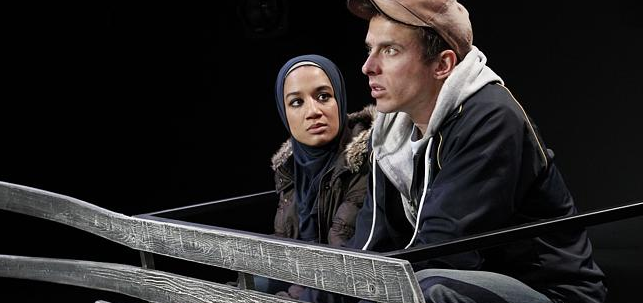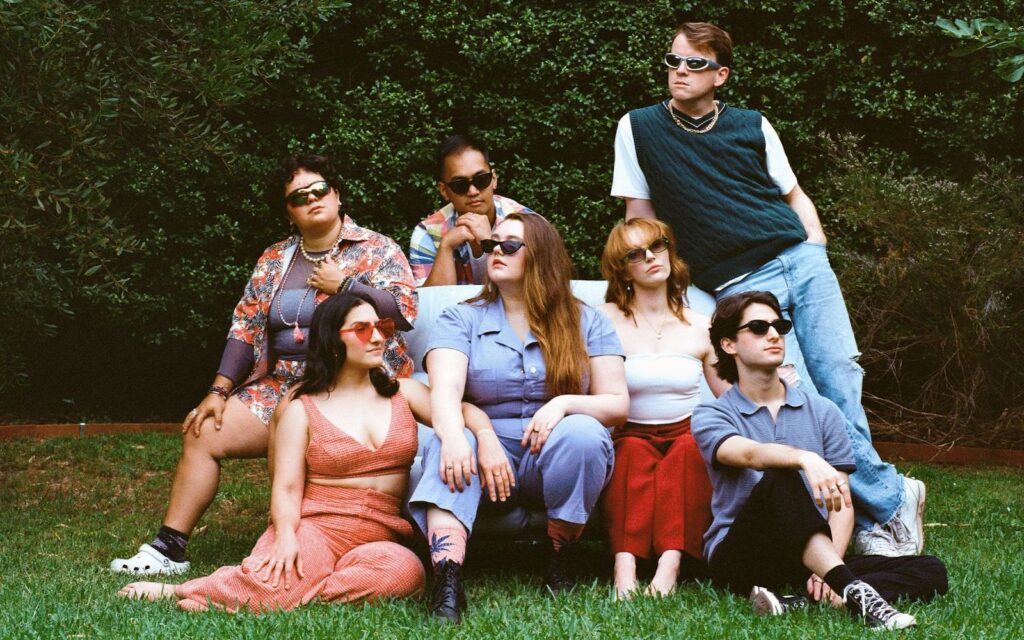David Grieg’s Yellow Moon is a modern take on the Bonnie and Clyde narrative. It tells the story of Lee Macalinden (Luke Ryan) and Leila Suleiman (Naomi Rukavina), two teenage runaways tied together by a tragic encounter and a moment of violence.
“Stag” Lee and Silent Leila seem like an unlikely couple. At first glance, the two 17 year-olds appear to have little in common, aside from oppressive boredom. Lee is a cocky young man dreaming of a life of crime, while Leila is a studious Muslim girl whose vices include celebrity magazines and self harm. Lee struts around like he owns the place talking trash to anyone who’ll listen, while Leila has given up speaking entirely. The two meet by chance at an all night convenience store and Leila is instantly infatuated, convinced that Lee will pull from her ugly, stupid life.
They meet on a Friday night indistinguishable from any other in their small town until an altercation between Lee and his drunken step father takes a disastrous turn. Forced to flee, the pair head North to find Lee’s real father. Instead, they nearly freeze to death and are rescued by a gruff estate keeper, who takes them in. On the estate they are forced to confront their pasts and begin to see what possibilities the future may hold.
Under the skillful direction of Leticia Caceres, the four actors inhabit six characters and share the narration, which is at times poetic and effectively blurs the lines between reality and imagination. The multiple locations are created with a minimal set, engaging story telling and a sophisticated sound design. The play retains the Scottish setting of the original, but the actors don’t use Scottish accents and the story is absolutely universal.
The play is about teenagers and will engage a number of wholly teenage audiences as it tours regional Victorian schools. Even so, it resonates with an adult audience. At some points it verges on the melodramatic, but covers a lot of pertinent ground, from alcoholism to isolation and depression, and the cast are consistently engaging. There is no clear cut happy ending, but the play is hopeful. There are some particularly touching scenes, where life seems just as good as the pages of a glossy magazine.







